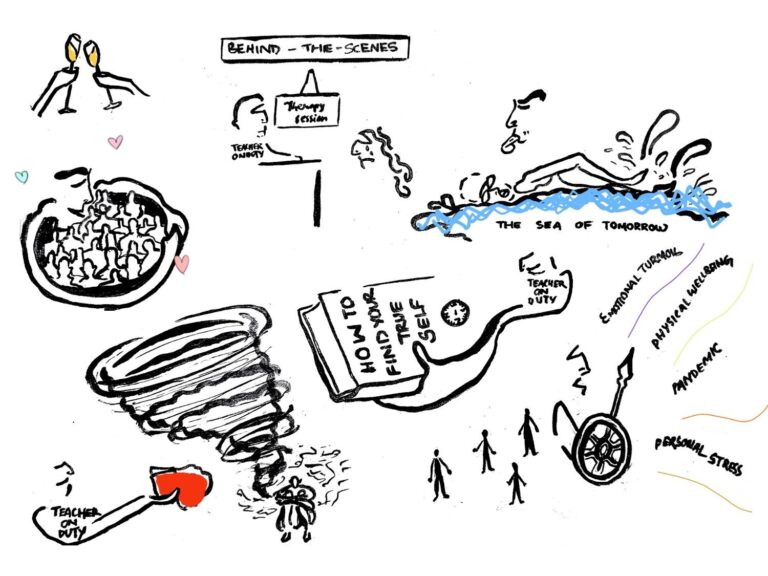The discourse of violence on women
Samanneeta Chakraborty is a Post- Graduate in History from Presidency University.
Usage of the term femicide
The term femicide can be defined as the deliberate killing of women at the hands of men. It is essentially viewed from the lens of a tool that men use to suppress their voices. Yet, femicide is not a new phenomenon of the 21st century, and its history can be traced to the 16th and 17th centuries when women were perceived to be practicing witchcraft and were exterminated. These women were believed to be a threat to the society and were discriminated against. However, the terminology of homicide in its connotation does not take into account the violence or oppression that is inflicted upon the women, whereas femicide can be perceived as a murder of women as its ulterior motive lies on the feeling of superiority by the men, whereby women are treated as property. [1]
The history of Turkey’s Atrocities
Turkey has witnessed an increasing number of femicides that have sparked protests by women globally and have led to the trending Black and White Challenge. However, it is important to understand the essence of this. The murder of Pinar Gulketin by her former boyfriend, Cemal Metin Avci, who was instrumental in burning her corpse, has led Women Activists to question the Istanbul Convention designed for the protection of women. This has been termed as intimate femicide whereby the intimate partner or spouse has killed the woman. However, there are various forms of femicide, such as honor- killing, dowry-related femicide, and female infanticide. [2] It is believed that the number of femicides in Turkey amount to 78.2%. It has been predicted that 2300 femicides have occurred in Turkey since 2010. Unemployment of the male partner has emerged as one of the causes for the perpetration of such a heinous crime whereby anger is displaced on the woman. The intent for the femicide is argued to be an assumption of adultery.[3] Forty- five countries that are members of the Council of Europe have been signatories of this Istanbul Convention, which had pledged to condemn any violence on the women. It has also recognized how violence on women over the centuries has been a product of the disparate relationship shared between men and women, which has been defined by dominance in most cases.[4] The Constitution of Turkey endorsed the Law to Protect Family and Prevent Violence against Women, which came to be known as Law. 6284 was accepted on 8/03/2012.[5] Nonetheless, the number of femicides that have occurred certainly brings to the forefront the loophole of Law. Women’s activities have clearly raised questions about the functioning of the law to Protect Family and Prevent Violence. As you scroll through social media, you would see women posting black and white pictures of themselves. It is a response to the atrocities that women have to bear in Turkey and a campaign to raise awareness for the international community to collectivity take action.
It would be important in this aspect to state how it was under the reign of the Young Turks in 1915 that the Armenian Genocide had occurred. The terminology of Genocide has been defined as the extermination of an ethnic or a racial group. The Armenians were a Christian minority, whereas the Young Turks believed that they were a threat to the notion of pan-Islamism. [6] The Armenian Genocide has remained a scar in the history of Turkey, although violence has been the defining element in her discourse.
Stance of President Recep Tayyip Erdogan: a retrogative outlook
President Recep Tayyip Erdogan has condemned the femicide, proclaiming that such atrocities are not part and parcel of Turkey’s culture, yet her past and present clearly brings to the fore the opposite. However, it was in 2014 that Erdogan had commented that women must embrace motherhood and at least give birth to three children to secure the growth of the population of Turkey.[7] He was quick to associate abortion with the connotation of murder. However, abortion that was legalized in 1983 has been viewed essentially from the prism of a taboo. The Law to Protect Family and Prevent Violence has emerged as a contestation for conservatives in Turkey to argue how it has been the sole cause of families breaking apart. The Organization for Economic Development and Cooperation argues in its report that was released in 2018, that only 34.2% in Turkey have joined the labor force when compared to statistics of women’s contribution to the workforce pool in other countries.[8] However, Erdogan has heralded socially constructed roles, and it cannot be denied. The Justice Development Party or by the acronym by which it is known, AKP was established in 2002, which embodies a conventional viewpoint. [9] The United Nations has proclaimed that Turkey has progressed in implementing the Law to Protect Family and Prevent Violence against Women. [10] “We recognize the considerable progress that Turkey has made with regards legislation to combat violence against women” [11]
Gender-based violence in Latin American Countries and India as case studies
It is important in this aspect to compare the stature of other countries where femicide is prevalent and her course of action towards gender-based violence. On the other hand, Latin American Countries are equally vulnerable to femicide as statistics prove. 3,287 women have been victims in 2018. It is believed that 6.8% femicides occur in El Salvador, 5.1% in Honduras, 2.3% in the country of Bolivia, whereas in Guatemala, it is 2.0%, and lastly, in the Dominican Republic 1.9%. [12] However, in Latin America, the Convention on the Elimination of All Forms of Discrimination against Women had been legalized. But, we notice that a gap exists between the implementation of the law and the rising number of femicides, which is the case in Turkey as well. The United Nations was to oversee how states follow this legislation. It was under the purview of the UN to receive complaints as well. Statistics bring to the fore a gross violation of Human Rights in Turkey and Latin American Countries. Dowry-related femicides and honor- killing is prevalent in India, whereby from the year 2012 to 2015, almost 24,771 deaths have been reported. [13]
The Asian Center of Human Rights states how girl children are believed to be a financial burden and is the sole cause behind female infanticide, with India ranking the list. In the World Economic Forum’s Gender Gap Index, India has achieved the 108th ranks in terms of women’s safety. The Beti Bachao, Beti Padhao scheme was introduced by the Modi Government in 2015 to argue to its audience to reduce discrimination between girls and boys. An amount of Rs. 648 crore had been allocated for this scheme, which was spent on media launches. On the other hand, girls’ enrollment had increased between 2018- 2019 to 95,469, but no survey was conducted to assess why there was a continuing rise in numbers of girls dropping off from school. Rajasthan had ranked the lowest when it came to female literacy, standing at 52.7% and yet was facilitated by the Ministry of Women and Child Development. [14] Well, it is rhetoric.
Conclusion
It is rather essential that the International Community responds to the inhuman menace of femicide. Women have been victims of gender-based violence from time immemorial. Even in the 21st century, legislations to prevent violence against women prove to be an utter failure as countries are not being able to implement it adequately.
References
- Manjoo, Rahida. ‘Reports of the Special Rapporteur on Violence Against Women, Its Causes and Consequences’, United Nations General Assembly, Human Rights Council, Twentieth Session, Agenda 3, 2012. https://www.ohchr.org/Documents/Issues/Women/A.HRC.20.16_En.pdf
- World Health Organization. “Understanding and addressing violence against women”, Pan American Health Organization. Accessed on 8th August, 2020. https://apps.who.int/iris/bitstream/handle/10665/77421/WHO_RHR_12.38_eng.pdf;jsessionid=DC07BEBB75FD83A0EC08D7F70721119B?sequence=1
- Toprak, Sadik and Ersoy, Gohan. “Femicide in Turkey between 2000 and 2010”, PLosOne, 23 August, 2017. Accessed on 8th August, 2020. https://www.ncbi.nlm.nih.gov/pmc/articles/PMC5568387/
- Law to Protect Family and Violence Against Women, Law No. 6284. http://dekaum.deu.edu.tr/wp-content/uploads/2016/05/law-6284.pdf
- Council of Europe. Convention on preventing and combating violence against violence and domestic abuse, 2011. Accessed on 8th August, 2020. https://www.coe.int/en/web/conventions/full-list/-/conventions/rms/090000168008482e.
- Morris , Benny and Ze’evi, Dror. The Thirty- Year Genocide: Turkey’s destruction of its Christian Minorities: 1894- 1924. Cambridge: Harvard University Press, 2019.
- Karakas, Bruce. “Femicide in Turkey: What’s lacking is political will”, Middle East Institute, December 18, 2019. Accessed on 8th August, 2020. https://www.mei.edu/publications/femicide-turkey-whats-lacking-political-will
- Schollenberger, Katrina. “Turkey Femicide: What is happening to women in Turkey and what is the black and white challenge”, The Sun News, 29 July, 2020. Accessed on 8th August, 2020. https://www.thesun.co.uk/news/12258366/domestic-violence-women-in-turkey-instagram-challenge/
- Daily Sabah Online. “Turkish politicians condemn spate of domestic violence, femicide”, Daily Sabah ,July 20, 2020. Accessed on 8th August, 2020. https://www.dailysabah.com/politics/legislation/turkish-politicians-condemn-spate-of-domestic-violence-femicides
- United Nations Turkey Country Statement, 27 July, 2020. Accessed on 8th August, 2020. https://turkey.un.org/en/54345-united-nations-turkey-country-team-statement
- United Nations Turkey Country Statement, 27 July, 2020. Accessed on 8th August, 2020. https://turkey.un.org/en/54345-united-nations-turkey-country-team-statement
- Gender Equality Observatory for Latin America and the Carribean. “Femicide or Feminicide”, United Nations ECLAC. Accessed on 8th August. https://oig.cepal.org/en/indicators/femicide-or-feminicide
- Global American Report. “Femicide and International Womens’ Rights: An epidemic of Violence in Latin America”. Accessed on 8th August
- Chodhury, Manira. “More PR, less change: The impact of Beti Bachao Padhao Scheme in one Rajasthan District” , The Caravan, 29th April, 2019. Accessed on 8th August. https://caravanmagazine.in/government/beti-bachao-beti-padhao-hanumangarh








